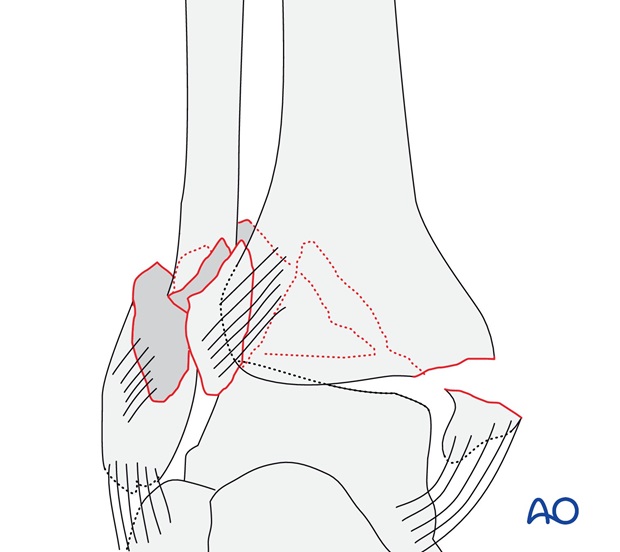Transsyndesmotic, posterior, lateral multifragmentary, and medial fractures
If there is a multifragmentary fibular fracture at the level of the syndesmotic ligaments, associated with a posterior malleolar fracture, this is classified as an AO/OTA 44B3.3 fracture.
The fracture of the posterior tibia may be a small cortical avulsion. Much more common is a larger compression fracture, the fragment bearing a variable area of the posterior articular surface.
This is usually associated with a medial injury, either a rupture of the deltoid ligament, or a fracture of the medial malleolus.
One of the fibular fragments may represent the detachment of the tip of the main proximal fibular fragment. This usually bears some intact portion of the anterior syndesmotic ligament. It may become entrapped between the other fibular fragments.
The most common injury pattern occurs with axial loading of a supinated foot as described for 44B1 and 44B2 fractures. Progressive talar external rotation results in further opening of the fibular fracture, with posterior displacement of the lateral malleolus. Finally the talus exits the ankle mortise posteriorly and disrupts the medial collateral structures. In some cases, as the talus dislocates posteriorly out of the mortise, it fractures the posterior tibial rim (Volkmann's fracture).















